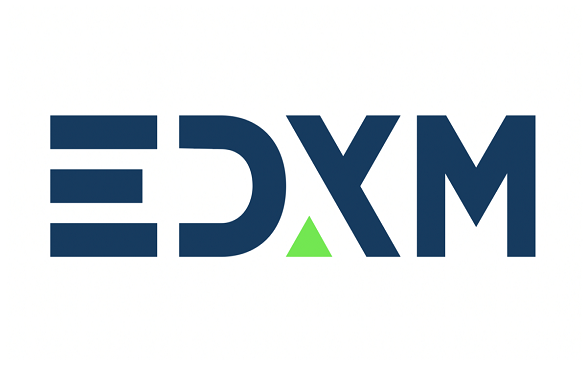Dollar-cost averaging (DCA) has become one of the most indispensable investment strategies, especially in highly volatile financial markets such as crypto and stocks.
The concept of DCA traces its roots back to the early 20th century when it gained prominence as a strategic investment approach during the Great Depression. It was popularized by academic studies and financial experts who sought to provide a practical solution to the challenges posed by market volatility.
One of the pioneering studies on this investment strategy was published by mathematician and economist Benjamin Graham in his seminal work, “The Intelligent Investor,” first published in 1949. Graham, considered the father of value investing, advocated for a disciplined approach to investing that involved consistent contributions over time rather than attempting to time the market.
During the challenging economic conditions of the 1929 stock market crash and subsequent depression, investors were grappling with the unpredictable nature of market fluctuations. This gave birth to the dollar-cost averaging approach. This article explores how crypto investors can leverage DCA for profitability.
Understanding Dollar-Cost Averaging
Dollar-cost averaging (DCA) is an investment strategy that involves regularly investing a fixed amount of money at scheduled intervals, regardless of the asset’s price. This approach is designed to reduce the impact of short-term volatility on the overall purchase of the investment.
This systematic approach ensures that an investor buys more units of an asset when prices are low and fewer units when prices are high, ultimately averaging out the overall cost over time. Also, the approach was designed to address the emotional and financial challenges investors faced during periods of market uncertainty.
Take, for example, an investor who commits to investing $1,000 in Bitcoin (BTC) every month. If the price of BTC is high in a given month, the $1,000 will buy fewer BTC; conversely, if the price is low, the same $1,000 will purchase more BTC.
Thus, the DCA consistent investment pattern helps crypto investors to mitigate the impact of short-term price fluctuations such as the massive bitcoin price correction after the spot ETFs surge.
The Importance of DCA in Crypto Investing
The primary importance of dollar-cost averaging to crypto investors is risk and volatility mitigation. Notably, the crypto market is renowned for its high volatility compared to traditional markets, with prices capable of experiencing rapid and substantial fluctuations. DCA acts as a buffer against this volatility by spreading investments over time, reducing the impact of short-term price swings on the overall portfolio.
In particular, DCA mitigates the risk associated with trying to time the market. By consistently investing fixed amounts at regular intervals, crypto investors avoid the pressure of making predictions about market highs and lows.
The second is emotional discipline. It goes without saying that emotions can run high in crypto trading, where fear of missing out (FOMO) and FUD (fear, uncertainty, disorder) can greatly influence investment decisions. DCA instils discipline in crypto investors by promoting consistent, predetermined investments regardless of market conditions, helping investors avoid all sorts of impulsive reactions to price movements.
Also, dollar-cost averaging makes investing more accessible to a broader range of individuals. That is, instead of needing a lump sum to enter the market at an optimal time, crypto enthusiasts can start with smaller, consistent amounts, gradually building their positions or portfolios over time.
It bears mentioning that even experienced crypto traders and analysts can struggle with market timing. DCA helps mitigate the impact of timing mistakes, reducing the effect of market corrections on one’s overall portfolio.
The Downsides of DCA in Crypto Investing
Of course, there are always two sides to every coin. Amid the numerous advantages of DCA, this time-tested investment strategy carries a few downsides.
While DCA provides stability and balance to investors’ holdings, it may result in missed opportunities to capitalize on significant market lows. Said differently, investors using DCA might not be able to take full advantage of a one-time, substantial market crash.
Additionally, during prolonged bull markets, where prices consistently rise, a lump-sum investment before the bull run may outperform the DCA strategy during the bull run. This is because all invested funds benefit from the overall market growth from the outset. Meanwhile, intermittent buying during sustained bull markets may lead to losses as price correction eventually sets it.
For illustration, BTC fell to nearly $18,000 in June 2022. A user who invested a lump sum of $10,000 then would generate more profits than another trader who invested $100 for 10 months from June 2022. Clearly, the first user would have accumulated more bitcoins, eventually booking a higher ROI as BTC surpassed $49,000 amid the short-lived crypto market rally, fueled by the historic approval of 11 spot bitcoin ETFs by the US SEC.
Moreover, adopting the DCA strategy doesn’t exempt investors from the crucial task of identifying solid crypto projects. In essence, even within the sound framework of dollar-cost averaging, where investments are made consistently over time, the quality of the underlying asset remains paramount. Why? Investing in a weak crypto project means systematically channeling funds into a depreciating asset.
Conclusion
Dollar-cost averaging emerged as a method to eliminate the burden associated with trying to perfectly time the highs and lows of volatile financial markets. The concept also enhances disciplined investing by helping crypto investors to control their emotions. However, there are several cons associated with the DCA approach, including the risk of missing high-rewards investment opportunities. Therefore, there is a need for crypto investors to draw a balance between the dollar-cost averaging and lump-sum investment approach.
Image source: Finbold
Credit: Ndianabasi Tom A crypto journalist and content writer who has been talking about cryptocurrency and blockchain technology since 2018, Ndianabasi is a Writer at Crypto Asset Buyer (CAB).
Discover more from Crypto Asset Buyer
Subscribe to get the latest posts sent to your email.




